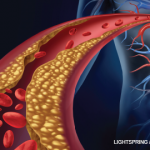 Nonsteroidal anti-inflammatory drugs (NSAIDs) have been used therapeutically since the 1960s.1 Evidence of adverse cardiovascular outcomes led to the withdrawal of the selective COX-2 inhibitor rofecoxib in September 2004, when the question of cardiovascular safety of NSAIDs first came into the limelight.2 Valdecoxib (Bextra) was subsequently withdrawn from the market in April 2005 due to adverse cardiovascular effects and serious skin reactions.3 The U.S. Food and Drug Administration (FDA) allowed celecoxib to remain on the market, but mandated a cardiovascular safety trial.4,5 The results of this trial, Prospective Randomized Evaluation of Celecoxib Integrated Safety vs. Ibuprofen or Naproxen (PRECISION), were recently published.6
Nonsteroidal anti-inflammatory drugs (NSAIDs) have been used therapeutically since the 1960s.1 Evidence of adverse cardiovascular outcomes led to the withdrawal of the selective COX-2 inhibitor rofecoxib in September 2004, when the question of cardiovascular safety of NSAIDs first came into the limelight.2 Valdecoxib (Bextra) was subsequently withdrawn from the market in April 2005 due to adverse cardiovascular effects and serious skin reactions.3 The U.S. Food and Drug Administration (FDA) allowed celecoxib to remain on the market, but mandated a cardiovascular safety trial.4,5 The results of this trial, Prospective Randomized Evaluation of Celecoxib Integrated Safety vs. Ibuprofen or Naproxen (PRECISION), were recently published.6
PRECISION Safety Trial
This was a randomized, multicenter, double-blind, noninferiority trial in 24,081 patients with osteoarthritis or rheumatoid arthritis, and with increased cardiovascular risk. Randomization was stratified by the patients’ primary diagnosis, aspirin use and geographic location. The trial goal was to assess the non-inferiority of celecoxib with regard to the primary composite outcome of cardiovascular death.
Patients were treated with celecoxib (100 mg twice daily), ibuprofen (600 mg three times daily) or naproxen (375 mg twice daily) for a mean duration of 20.3±16 months, with a mean follow-up of 34.1±13.4 months. Investigators could increase the celecoxib dose to 200 mg twice daily, ibuprofen to 800 mg three times daily or naproxen to 500 mg twice daily, following the first visit. All participants were provided with esomeprazole 20–40 mg for gastric protection. Patients who were receiving low-dose aspirin (<325 mg) were allowed to continue using it.
The primary composite outcome was the first occurrence of an adverse event that met Antiplatelet Trialists Collaboration (APTC) criteria. These criteria included death due to cardiovascular causes (including hemorrhage), nonfatal myocardial infarction or nonfatal stroke. A secondary composite outcome, major adverse cardiovascular events, included components of the primary outcome plus coronary revascularization, hospitalization for unstable angina, or transient ischemic attack. Clinically significant gastrointestinal (GI) events were also secondary outcomes. Tertiary outcomes included iron deficiency anemia (GI origin), clinically significant renal events, and heart failure or hypertension hospitalization. A non-adjudicated secondary outcome was arthritis pain intensity, which was assessed using a Visual Analogue Scale (VAS) (scores range from 0 to 100 mm, higher scores equal worse pain). Noninferiority required a hazard ratio of 1.12 or lower, as well as an upper 97.5% confidence limit of 1.33 or lower in the intention-to-treat population and 1.40 or lower in the on-treatment population.
The trial duration was 10 years, and 90% of the participants had osteoarthritis, while 10% had rheumatoid arthritis. During the trial, 69% of the patients stopped taking the study drug, and 27% of patients discontinued follow-up.
Results
The primary outcome (APTC) occurred in 2.3% of celecoxib-treated patients (n=188), 2.5% of the naproxen-treated patients (n= 201), and 2.7% of the ibuprofen-treated patients (n=218). In the on-treatment population, the primary outcome (APTC) occurred in 1.7% of the celecoxib-treated patients (n=134), 1.8% of the naproxen-treated patients (n=144) and 1.9% of the ibuprofen-treated patients (n=155). Hazard ratios were: 0.90 for celecoxib vs. naproxen; 0.81 for celecoxib vs. ibuprofen (P<0.001 for non-inferiority); and 1.12 for ibuprofen vs. naproxen. When celecoxib was compared with either ibuprofen or naproxen, it met all four of the prespecified noninferiority requirements.
The event rate for the composite outcome of serious GI events was lower in the celecoxib group than in the naproxen-treated patients (0.71) or the ibuprofen-treated patients (0.65). Serious renal events occurred at a lower rate in celecoxib-treated patients than in ibuprofen-treated patients (HR, 0.61), but the rate did not significantly differ from naproxen-treated patients (HR, 0.79). Hypertension hospitalization was lower for celecoxib-treated patients than for ibuprofen-treated patients, but not for naproxen-treated patients. For pain assessment, a significant, but small, advantage was identified for naproxen vs. celecoxib or ibuprofen.
In summary, because higher doses of celecoxib were not studied, the data cannot be extrapolated to other, higher doses. In addition, only two non-selective NSAIDs were compared, so the same holds true for data extrapolation. These data show that at moderate doses, celecoxib was found to be noninferior with respect to cardiovascular safety compared with ibuprofen or naproxen. Use of celecoxib also led to fewer GI events than either NSAID, and fewer renal adverse events compared with ibuprofen.
Michele B. Kaufman, PharmD, BCGP, is a freelance medical writer based in New York City and a pharmacist at New York Presbyterian Lower Manhattan Hospital.
References
- Brune K, Hinz B. The discovery and development of antiinflammatory drugs. Arthritis Rheum. 2004 Aug;50(8):2391–2399.
- U.S. Food & Drug Administration. FDA Public Health Advisory: Safety of Vioxx. 2004 Sep 30.
- U.S. Food & Drug Administration. Information for healthcare professionals: Valdecoxib (marketed as Bextra). 2005 Apr 7.
- U.S. Food & Drug Administration. FDA announces series of changes to the class of marketed non-steroidal anti-inflammatory drugs (NSAIDs). 2005 Apr 7.
- Pfizer. Advisory committee briefing document: Assessment of cardiovascular safety in non-steroidal anti-inflammatory drugs (NSAIDs). 2014 Feb 10–11.
- Nissen SE, Yeomans ND, Solomon DH, et al. Cardiovascular safety of celecoxib, naproxen, or ibuprofen for arthritis. N Engl J Med. 2016 Nov 13; doi: 10.1056/NEJMoa1611593


